- Home
- Isaac Hooke
Flagship (A Captain's Crucible #1) Page 4
Flagship (A Captain's Crucible #1) Read online
Page 4
"Three days?" Jonathan said. "You have two hours."
"But it takes at least two hours to reel in the line—"
"Which is precisely the amount of time I have given you," Jonathan said. "Two of our ships haven't reported in yet. I want to go look for them. You can return to the gas giant later."
There was a momentary pause on the connection.
"Sir," Souza said. "If I may be so bold... there are protocols to follow. Standards to meet. Taxiing in and out of a gas giant's orbit is a tremendous waste of propellant. We—"
Jonathan cut him off. "Two hours. Once you have reeled in the collector, I'll expect you to initiate a transfer orbit to rejoin the rest of the task unit. Contact me if there are any issues. Captain Dallas out."
Jonathan focused on the small symbol overlaying his vision in the upper left—an icon of an X stamped over a mouth—and the remote connection terminated.
Jonathan stood. "The watch changes in two hours," he told Robert. "Call in your replacement and get some rest. I want you present when we begin our search. I'll be in my office."
Taking a nap.
"Aye sir," Robert said.
* * *
"Launch a comm drone and inform the admiral we are breaking orbit to search for the Selene and the Aegis," Jonathan said after he had returned to the bridge two and a half hours later. The second drone sent beyond the moon was overdue.
"Launching a comm drone," the second watch comm officer said.
On the external video feed, Jonathan watched the new drone drift from the Callaway, the purple and orange bands of Achilles providing a colorful ceiling. Once the device was in range of the relay drone at the edge of the gas giant, it would transmit its message, wait for a response, and then turn back.
"Nav, plot a course toward the moon Achilles I."
"Course plotted," the nav specialist said. "Helm is clear to engage."
"Helm, push our nose into position and engage at half power when ready."
"Nose in position," the helmsman returned a few minutes later. "Engaging engines. Half power."
"Comm," Jonathan said. "Instruct the task unit to match our course and speed."
"Aye sir," the second watch comm officer said.
The Grimm was only halfway through its transfer orbit, and about three thousand kilometers away from the rest of the unit, but that was close enough to begin the search and rescue operation.
Jonathan stared at the dotted line of the Callaway's new trajectory as portrayed by his aReal. According to the tactical display, at the current speed it would take them roughly two hours to reach the moon.
"Increase speed to seventy-five percent," Jonathan said.
"Increasing speed."
"The Grimm won't be able to keep up," Robert observed. "She isn't even out of her transfer orbit."
"If the Grimm ever passes beyond ten thousand kilometers I'll slow us down," Jonathan assured him.
A few seconds later an icon indicating a call from Stanley "Jailbird" McTaggert, the chief engineer, appeared on Jonathan's aReal. Stanley had earned his nickname for the number of colonies he had gotten himself banned from during shore leave.
Jonathan accepted the call and the chief engineer appeared in the center of the Round Table for his eyes only.
"Captain, why are we pushing the engines?" the lieutenant said, the outrage obvious in his voice.
"Why are you still on shift?" Jonathan told the man. "First watch ended three hours ago."
"That's not the point. You know my engines need to be treated with respect. Use the speed only when you need it."
"We need it, Stanley. We have two missing ships. And the relay drone sent to look for them is long overdue. Something is obviously wrong. They need us. Just give me an hour and a half."
"Fine. An hour and a half. But don't make a habit of abusing my engines."
"I won't." Jonathan tapped out.
Twenty minutes passed. The tension was obvious on the bridge. Officers tapped fingers nervously, or rubbed sweaty palms. No one knew what to expect past that moon.
"How many relay probes do we have left, Ensign?" Jonathan asked the current ops officer.
"Two," Ensign McNamara said.
"You're considering launching another drone scout?" Maxwell asked him.
"You read my mind," Jonathan told the AI.
"At our current speed, we will match any drone we launch," Maxwell responded.
Good point.
"Sir?" the ensign asked.
"Never mind, Ensign," Jonathan said.
Robert extended his noise canceler to include the captain.
"Getting antsy?" the commander asked him.
"A little," Jonathan admitted. He amended that a moment later: "A lot."
"I'm sure everything will be fine," Robert said.
"You don't sound as confident as you did a few hours ago," Jonathan said.
"No," Robert agreed.
"Sir," Ensign McNamara said urgently. "The Selene."
Jonathan glanced at the tactical display overlaying his aReal. A blue dot had emerged from behind the moon. Zooming in on the external hull feed in the upper right, he recognized the design of the military research vessel.
"And so the prodigal daughter returns," Robert said.
"A bit disturbing that she's alone, though." Jonathan crossed his left arm over his chest, clasped the right bicep, and lifted the fingers of the right hand to his chin. He placed his index and middle fingers just above his upper lip and the thumb under his chin, forming a triangle. He rubbed the slight stubble. "Are we in hailing range yet?"
"Still too much interference," the comm officer said.
"The thermals are off, Captain," McNamara said.
"What do you mean?"
"She's running cold, sir," the ensign explained. "I don't think her reactors are operating."
Jonathan zoomed in on the external camera feed. The ship was long and box-like, resembling a smaller version of a bulk carrier. He switched to the thermal and radiation bands; the ensign was right, the emissions were extremely low, indicating most of the radiators had no internal heat to dissipate. A bad sign.
Jonathan tapped his splayed fingers over his lips. "Drifting?"
"It would appear so," McNamara answered. "Dead in the void."
"Can we tell if any of the lifepods have been used?"
"Still too much interference for an active scan. She does seem perfectly intact, though. I'm not seeing any evidence of a hull breach."
Jonathan glanced at Robert. "Commander, organize an away team. Bring an engineer. A scientist. And security—some MOTHs and Centurions. Gather in hangar bay one. I want you aboard that ship as soon as we're in range."
Robert stood. "Aye, sir."
"Maxwell, inform the shuttle department head I want a Dragonfly fueled and ready to go in hangar one. And helm, update our course. Bring us to within four kilometers of the Selene's starboard side."
There was no change in the status of the Selene as they grew near enough for communications and active sensors to punch through the interference.
Several minutes later the Callaway reached the given position.
"Helm, park us. Comm, instruct the remaining members of the task unit to assume safe escort positions. Ops, deploy telemetry drones. I want the Selene's entire hull scanned for breaches. And comm, hail them again."
The helmsman fired reverse thrust until their cruiser appeared stationary relative to the drifting Selene. The military research vessel lay a little under four kilometers off the port bow, thirty-five degrees declination.
"No answer to our hails," the comm officer said.
"Hull scan is complete," Ensign McNamara said some time later. "The Selene is intact."
"Any signs of the Aegis yet?"
"No, Captain."
"Ops, launch another relay drone to Achilles I. Instruct it to return to communications range and issue a data dump ten minutes after passing beyond line of sight. Instruct it to repeat the operation
ad infinitum, adding intervals of ten minutes to its journey each time. Let's see if we can paint a partial picture of the dark side before we lose it like the others."
"Launching drone," the second watch ops officer said.
Technically, Jonathan could have had either Maxwell, ops, tactical or even comm launch that drone; he tried to divvy up tasks as appropriate for the intended function.
"Captain," the comm officer said. "Comm Drone B has returned from the edges of the gas giant. There's a message from the admiral for you. Would you like me to send it to your aReal?"
"Summarize it," Jonathan said.
The comm officer paused a moment, then said: "The admiral acknowledges our search and rescue operation. Though he seems disappointed that we let the two ships venture forth without approval from him, first."
If I requested approval for everything I did, Jonathan wanted to say. I'd never get anything done. Instead: "Send this response: We've found the Selene. It appears abandoned. We're proceeding to investigate. Captain out." He turned toward the ops officer. "Have you been able to interface with the Selene's AI via the remote override protocol?"
"No."
"Do you need my command codes?"
"Normally I would," the ensign answered. "But the AI isn't responding. In fact, nothing is—the whole system appears to be offline."
Jonathan tapped his lips with that finger triad of his. "Can you tell if any of the lifepods have been launched yet?"
"The readings are blurred somewhat by the radiation," the ensign said. "But it looks like no, none of them were launched."
"I have my team assembled in hangar bay one," Robert's voice came over the aReal. "We're suited up inside a fully-fueled Dragonfly. Waiting on your order to transit to the Selene."
"All ships are at safe escort distances," the ensign informed the captain.
Jonathan glanced at the tactical display on his aReal and confirmed the ensign's words.
"You're cleared for launch, Commander," Jonathan said.
five
Robert waited impatiently as the Dragonfly crossed the four kilometer span of space separating the two vessels. He did his best to ignore the stomach-churning feeling zero-G always inflicted on him: shuttles were equipped with inertial compensators but not artificial gravity. That fact always bothered him, because it seemed to Robert that it should be a simple matter to extend the inertial dampening to provide the feeling of gravity, but the scientists always assured him there was more to it than that.
The two MOTHs tapped their feet with nervous energy, obviously excited by the mission. The elite special forces soldiers usually had nothing to do but hang out at the gym all day, that and practice their war games in the ship's virtual kill house. They had to pass the time somehow, since the navy mandated a small MOTH presence aboard every ship. Well, they did help the masters-at-arms (MAs) provide security, too, taking on patrols and watches as necessary, though Robert was sure MOTHs considered such duties beneath them.
Their specialized jumpsuits were substantially bulkier than the spacesuits the other party members wore, containing an exoskeleton that augmented the speed and strength of each soldier to near robotic levels. Or so he had been told.
The shuttle rolled, tilting the view of the Selene beyond the main window. Robert felt suddenly nauseous. Throwing up in a space suit was a bad idea, as there was a chance the vomit could clog the air regulators. He wasn't worried so much about that, but more-so the effect it would have on the away team's opinion of him. Pride simply wouldn't let him throw up.
He pressed his lips against the nozzle below his mouth and took several sips of water.
The science officer had no such qualms about throwing up apparently, because he vomited right there in his helmet, splattering the lower part of the glass plate.
Robert checked the man's status on his aReal. Life signs were within normal parameters and his breathing apparatus was unaffected by the vomit.
"Are you all right?" Robert asked him.
"Fine," the science officer said after a moment. "Just a little... queasy is all." He threw up again.
One of the MOTHs laughed.
Robert gave the man a withering look and the soldier quickly straightened.
"Sorry sir," the petty officer second class said.
"Laugh again," Robert told him. "And you're the one who's going to be cleaning his suit."
"Understood, sir," the soldier said.
MOTHs were hard men, and the best way to deal with them was to treat them mercilessly. They would expect as much because of their military training. Anything less would be viewed as a sign of weakness.
The shuttle arrived at the Selene's external hangar doors. The craft hovered alongside, matching the speed of the drifting vessel.
Several uneventful moments passed.
"Is there a problem, Pilot?" Robert said over the comm.
"I can't find the bay doors on the device list," the pilot said. "Nor any other ship systems for that matter. If I can't connect, I can't issue an override request."
"Let me try." Robert pulled up the list of remotely accessible devices on his aReal. They were all devices local to the shuttle, sorted by range from his person, such as the airlock and nav controls, along with a few systems from the Callaway that were still cached. Robert focused on the refresh button and the HUD updated with the message:
Searching for interfaces...
The display refreshed, showing the same local devices as before, minus most of the Callaway's devices. There were none from the Selene itself.
"Looks like we're going to have to dock the old fashioned way," Robert said. "Pilot, find the nearest airlock hatch."
The pilot directed the Dragonfly along the hull until he found what he was looking for, then he had the autopilot magnetically secure the shuttle to the research vessel.
"Attachment complete," the pilot announced. "Whenever you're ready, Commander."
"Let's go, men." Robert pushed off from the bulkhead and floated across to the shuttle's internal hatch.
The commanding MOTH, one Chief Rade Galaal, beat him to it. The soldier reached out to open the hatch, but glanced at Robert for confirmation first.
Robert nodded.
Rade opened it. There was no explosive decompression as the shuttle had no atmosphere.
Robert stood in front of the Selene's external hatch.
"Shall I get the laser cutter?" Rade asked.
"Let me try the command overrides, first." Robert knelt beside the small control panel that lay at the center of the hatch. It contained a keypad.
He attempted a remote connection one more time, but again no cloud devices showed up in the access list, despite the fact he was standing right next to the panel.
He retrieved an extension cord from his utility belt and plugged it into the provided slot.
His HUD displayed a message:
Searching for interfaces...
The device list updated. At the top, under the heading Selene, there was a new entry: External hatch 2-135-18-H.
Good. Power was still active to vital systems aboard the Selene, then.
He entered his manual override code.
"Prepare for retinal scan," his aReal informed him.
The panel scanned his retina through the face plate.
A moment later the entry hatch shuddered and collapsed inward a few inches. Robert disconnected the cord as the hatch slowly moved aside.
The airlock was dim beyond, lit only by emergency lights.
"Helmet lamps on, people," Robert said, activating his own. "Lead the way, Chief."
Rade turned on his helmet lamp and pulled himself into the external airlock, keeping the soles of his boots pointed downward. The moment he crossed the threshold between the shuttle and the ship, the soldier was pulled to the deck, his boots landing soundlessly. He gave Robert a significant glance.
"Artificial gravity is still active, people," Robert said into the comm. "Watch yourselves when crossing."
Robert hauled himself in after them, letting the artificial gravity drop him rather forcefully to the deck.
The guest connection area of his aReal lit up. Curious, Robert checked who was accessing his feed: very few people had the clearance. Not surprisingly, it was the captain. The wireless signal would pass between Robert's aReal and the communication node of the shuttle, then onward to the ship. Signal reception was good at the current range—the HUD pegged the lag at four seconds.
Robert flattened himself against the bulkhead as the final two party members entered. It was a tight fit in there.
When everyone was inside, Robert accessed the inner control panel the same way and issued a manual override, using his command codes to seal the hatch and pressurize the airlock to match the inner environment. When that was done, the inner hatch spiraled open.
"Centurions, go!" Rade said.
The two humanoid combat robots rushed into the dark passageway beyond, AR-52 plasma rifles at the ready.
The two MOTHs joined the Centurions a moment later, also sporting ARs.
"Clear," Rade transmitted.
Robert stepped inside; the science officer and engineer joined him.
He stood in a darkened passageway that was very much akin to those found aboard the Callaway. Like the airlock, it was illuminated only by emergency LEDs. The conical beams from their helmet lamps cut swathes through the murk.
"Life support systems are only partially active," the science officer said. He held a scanning device that he'd retrieved from his utility belt. "The crew compartments are still pressurized, and the air is still breathable. But it's cold, and getting colder by the minute. Currently plus three degrees above freezing."
"That's still relatively warm compared to deep space," Robert said. "I'm surprised the thermals readings were so low on her hull."
"Some ships get that way when their engines shut down," the engineer explained. The aReal labeled him Specialist Second Class Pierson.

 Warden 2
Warden 2 Devastator
Devastator Warden 4
Warden 4 Emperor
Emperor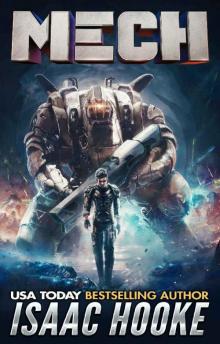 Mech
Mech Conqueror
Conqueror Fighter
Fighter The Forever Gate Ultimate Edition
The Forever Gate Ultimate Edition Defiler
Defiler Mech 2
Mech 2 Warden 3
Warden 3 Warden 1
Warden 1 Mech 3
Mech 3 Forerunner
Forerunner The Alliance (AI Empire Book 2)
The Alliance (AI Empire Book 2) Breaker (Monster Tamer Book 1)
Breaker (Monster Tamer Book 1) Bender of Worlds
Bender of Worlds The Pendulum Swings (The Forever Gate Book 8)
The Pendulum Swings (The Forever Gate Book 8) The Link
The Link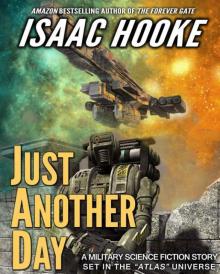 Just Another Day
Just Another Day Star Warrior
Star Warrior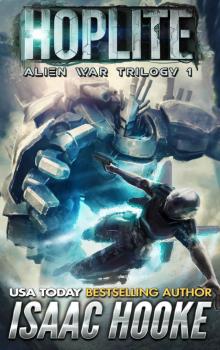 Alien War Trilogy 1: Hoplite
Alien War Trilogy 1: Hoplite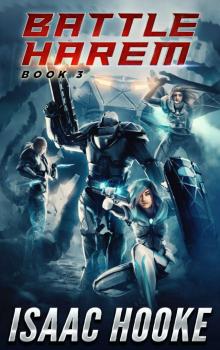 Battle Harem 3
Battle Harem 3 The Ethan Galaal Series: Books 1 - 3
The Ethan Galaal Series: Books 1 - 3 Reloaded
Reloaded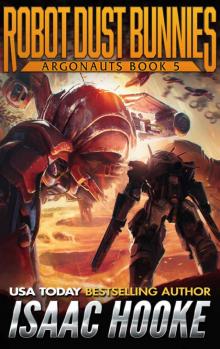 Robot Dust Bunnies (Argonauts Book 5)
Robot Dust Bunnies (Argonauts Book 5) Battle Harem
Battle Harem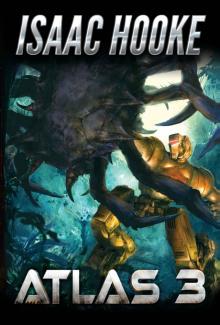 ATLAS 3 (ATLAS Series Book 3)
ATLAS 3 (ATLAS Series Book 3)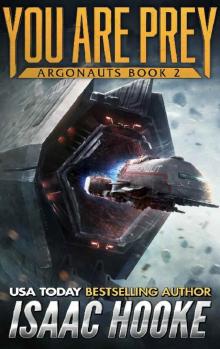 Argonauts 2: You Are Prey
Argonauts 2: You Are Prey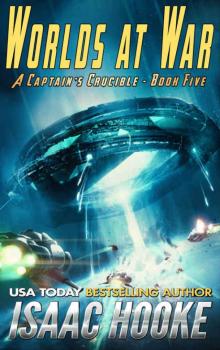 Worlds at War (A Captain's Crucible Book 5)
Worlds at War (A Captain's Crucible Book 5)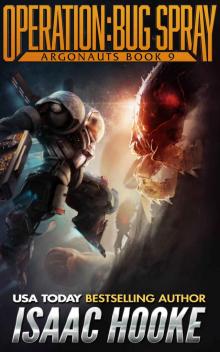 Operation: Bug Spray (Argonauts Book 9)
Operation: Bug Spray (Argonauts Book 9)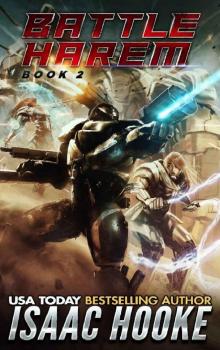 Battle Harem 2
Battle Harem 2 Redeemed (Bolt Eaters Trilogy Book 3)
Redeemed (Bolt Eaters Trilogy Book 3) Atlas
Atlas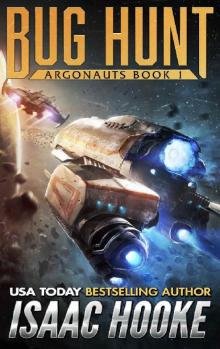 Argonauts 1: Bug Hunt
Argonauts 1: Bug Hunt Reactivated (Bolt Eaters Trilogy Book 1)
Reactivated (Bolt Eaters Trilogy Book 1)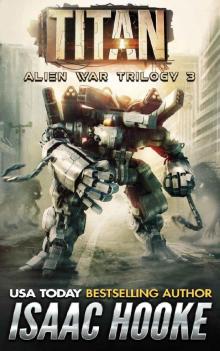 Alien War Trilogy 3: Titan
Alien War Trilogy 3: Titan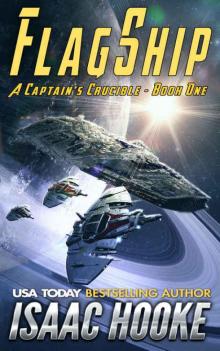 Flagship (A Captain's Crucible #1)
Flagship (A Captain's Crucible #1)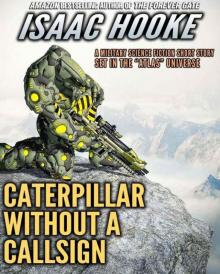 Caterpillar Without A Callsign
Caterpillar Without A Callsign The Forever Gate
The Forever Gate He Who Crosses Death (Star Warrior Quadrilogy Book 3)
He Who Crosses Death (Star Warrior Quadrilogy Book 3) Reforged (Bolt Eaters Trilogy Book 2)
Reforged (Bolt Eaters Trilogy Book 2) Refurbished
Refurbished Reloaded (AI Reborn Trilogy Book 2)
Reloaded (AI Reborn Trilogy Book 2) He Who Crosses Death
He Who Crosses Death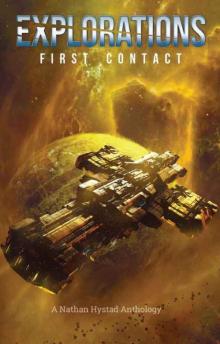 Explorations: First Contact
Explorations: First Contact Planet Killer (A Captain's Crucible Book 4)
Planet Killer (A Captain's Crucible Book 4)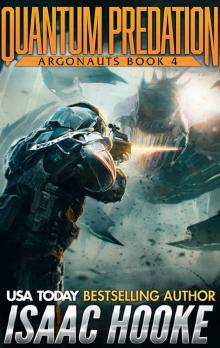 Quantum Predation (Argonauts Book 4)
Quantum Predation (Argonauts Book 4) Clandestine-IsaacHooke-FreeFollowup
Clandestine-IsaacHooke-FreeFollowup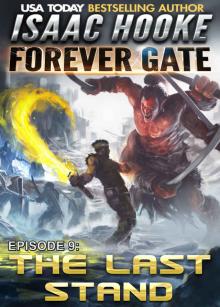 The Last Stand (The Forever Gate Book 9)
The Last Stand (The Forever Gate Book 9) City of Phants (Argonauts Book 6)
City of Phants (Argonauts Book 6)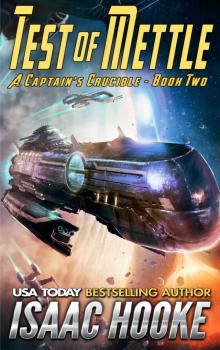 Test of Mettle (A Captain's Crucible Book 2)
Test of Mettle (A Captain's Crucible Book 2)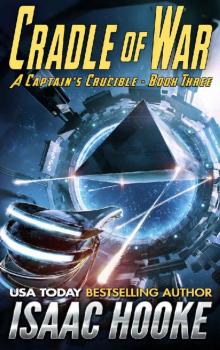 Cradle of War (A Captain's Crucible Book 3)
Cradle of War (A Captain's Crucible Book 3) Rade's Fury (Argonauts Book 7)
Rade's Fury (Argonauts Book 7) Rebirth (The Forever Gate Book 6)
Rebirth (The Forever Gate Book 6) The Forever Gate Compendium Edition
The Forever Gate Compendium Edition Mechs vs. Dinosaurs (Argonauts Book 8)
Mechs vs. Dinosaurs (Argonauts Book 8) Alien War Trilogy 2: Zeus
Alien War Trilogy 2: Zeus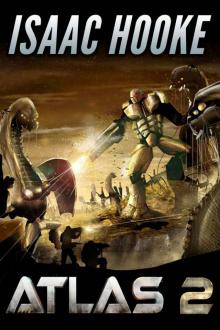 ATLAS 2 (ATLAS Series Book 2)
ATLAS 2 (ATLAS Series Book 2)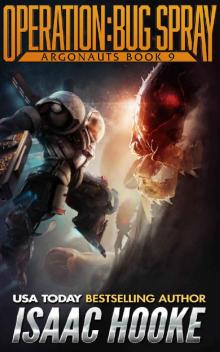 Operation_Bug Spray
Operation_Bug Spray